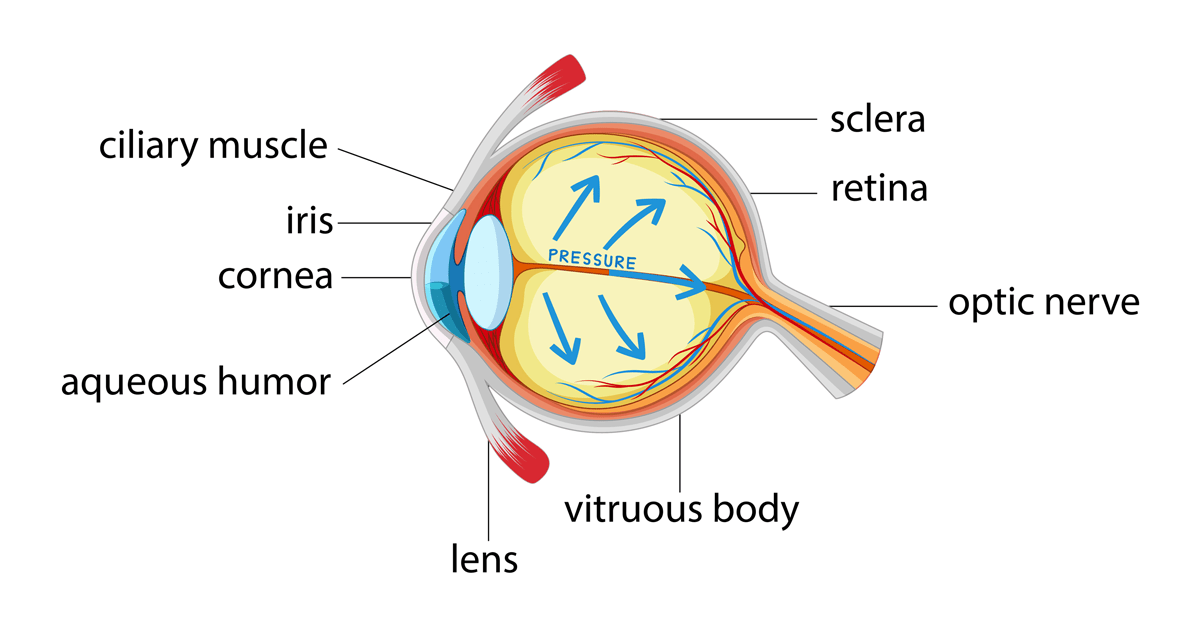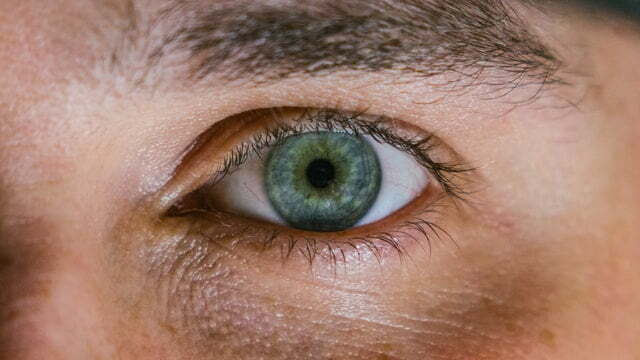
Glaucoma is a progressive eye disease that occurs when pressure builds up in the eye. This pressure causes the nerve to deteriorate, gradually causing vision damage or even vision loss. Glaucoma is a hereditary condition, but you may experience glaucoma even if you’re not aware of any cases within your family. The risk of glaucoma is highest among adults over 60, but it can occur at any age. Therefore, it’s essential to understand the early stages of glaucoma so you can preserve your sight as effectively as possible with this condition.
The Early Stages of Glaucoma

“macro shot photography of person’s right eye” used with permission via Unsplash by Jorden Whitfield
In the earliest stage of glaucoma, patients often experience few to no symptoms. However, during the first stage, fluid begins to build up in the eye. This may be the result of overproduction of the liquid or improper drainage. This can cause mild to moderate pressure, the first glaucoma symptom that most people will notice. However, some patients don’t feel the pressure yet. A dilated eye examination can detect early glaucoma at this stage.
Moderate stage glaucoma, sometimes referred to as stage two, is where patients usually start to notice symptoms of the disease. Disruptions in vision begin to occur at this point as eye pressure increases.
Late Stages of Glaucoma
The third stage of glaucoma is referred to as the advanced stage or severe stage. During this stage, peripheral vision loss may become severe. In addition, the optic nerve will sustain severe and irreversible damage at stage three if the glaucoma isn’t treated.
The fourth and final stage of glaucoma is the end-stage. At this point, there is little or no healthy eye tissue remaining. As a result, patients at this stage have minimal sight and are at a high risk of blindness.
Can Glaucoma Be Cured If Caught Early?
There is currently no cure for the eye damage caused by glaucoma. Once the retinal nerve has sustained this damage, it cannot be repaired. The vision loss that comes with glaucoma is permanent once it has happened.
However, it is possible to slow or even stop the progression of glaucoma, particularly when it’s caught early. The key to treating glaucoma is managing eye pressure. If this is done consistently, you may retain your vision even with glaucoma.
Symptoms of Glaucoma
It’s essential to catch glaucoma as early as possible to stop vision loss before the effects of the disease are too severe. The best-case scenario is that you will detect glaucoma in an early screening before you’ve experienced any vision loss at all. There are several types of glaucoma.
Open-angle glaucoma is the most common type. This is also the most difficult to notice, as the symptoms occur very slowly. Patients may begin to experience tunnel vision or a gradual loss of peripheral vision. However, even these signs are subtle in the early stages, mainly if glaucoma is only present in one eye, as the other eye will compensate.
Pigmentary glaucoma occurs when the pigment from your iris disperses, creating pressure. Pigmentary glaucoma is usually most noticeable during physical activity. If you have blurred vision, see halos, or experience feelings of eye pressure when you’re running, biking, or otherwise exerting yourself, this may indicate pigmentary glaucoma.
Angle-closure glaucoma is a more severe form of glaucoma that has a rapid onset. This is considered a medical emergency. Vision loss can occur very quickly. Symptoms of acute angle-closure glaucoma include:
- Severe eye pain.
- Acute forehead pain.
- Blurred vision.
- Halos around lights.
- A quick onset of visual disturbances.
- Nausea and vomiting as a result of the pain.
- Redness in the eye.
- A hazy appearance to the eye.
Glaucoma Screenings
The best way to prevent permanent eye damage from glaucoma is to get regular eye screenings for the disease. If you don’t have any known risk factors for glaucoma, the American Academy of Ophthalmology recommends getting a screening every 5 to 10 years up to the age of 40. Between the ages of 40 and 54, you should get a glaucoma screening every one to three years. From 55 to 64, individuals should get a glaucoma screening every one to two years. By age 65, you should increase your screenings to once every 6 to 12 months.
You have a higher risk for glaucoma if:
- You have a family history of glaucoma.
- You are African American, Hispanic, or East Asian.
- You are farsighted.
- You have high eye pressure.
- Your cornea is thin in the center.
- You have had previous eye surgery or injury.
- You have diabetes, heart disease, sickle cell anemia, or high blood pressure.
- You take corticosteroid medications.
A tonometry test is the most common method of screening for glaucoma. This test measures eye pressure by spraying a small puff of air into the eye. Your eye doctor may also use an applanation tonometer that gently touches the eye’s surface to measure the pressure. Your doctor will numb the surface of the eye with eye drops before performing this test.
A dilated eye exam known as ophthalmoscopy is another method for detecting early-stage glaucoma. For this test, your doctor will dilate your pupils with eye drops. Once the pupils are dilated, the doctor can see into the eye using a bright light. This light illuminates the optic nerve so your doctor can properly examine it for signs of damage.
Early Glaucoma Treatment
Treatment for glaucoma begins as soon as this condition is detected. All medicines revolve around lowering eye pressure. In the early stages, your doctor may be able to control your eye pressure with prescription medication or medicated eye drops. As glaucoma progresses, you may need to consider a laser procedure or eye surgery.
Sleeping with your head elevated can help lower the pressure in your eyes as you sleep, slowing glaucoma progression. It would be best to be mindful of your exercise routine when you have glaucoma, as strenuous physical activity may raise the pressure in your eyes.
If you’re experiencing any of the signs and symptoms of glaucoma, it’s essential to schedule an eye exam as soon as possible. Our eye doctors at the Northeastern Eye Institute can help you identify glaucoma early and develop an effective treatment plan.